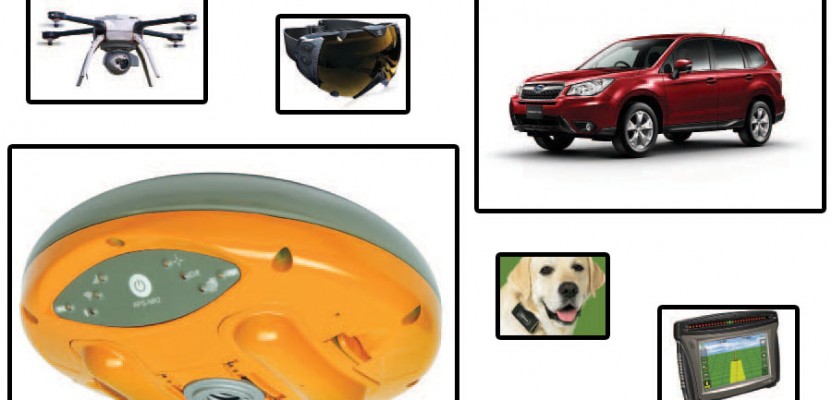Internet of Things and Internet of Where-Things-Are
Your field measurement instrument is connected to the internet as is your data collector; plus your phone and perhaps your watch; your home’s thermostat, security system, and lighting; your television, game consoles, entertainment system; your car, your kids, maybe even your dog’s collar; and soon, too, things like your heads-up-display goggles. Modern life at home, in the office, and in the field is wired— an “internet of things”—and increasingly an “internet of where-things-are.”
It’s probably a safe bet that just about everyone has heard of the “Internet of Things” (IoT) in one way or another, but hearing about it and really grasping the vast impact it will have on this planet are worlds apart. Much like how the internet fundamentally changed the way we communicate with one another, the Internet of Things will fundamentally change the way we interact with the world around us.
As connected sensors are integrated into a vastly more comprehensive assortment of “things” around us, this connection will allow us to alter not only the way we interact with these things, but also the value those things provide to us through the information and context we are able to gain from them.
A lot of companies have seen the value from the Internet of Things and have already begun to develop products and services as well as whole business plans around the Internet of Things ecosystem. One of the main players so far has been Cisco that has projected an estimated value of 14.4 trillion USD in the Internet of Things space by 2022. Both Apple and Google have also made significant moves to box out their own piece of the IoT pie.
Although the Internet of Things is just now getting solid footing, it has already affected many aspects of life. We can see the influence in our homes as devices from our thermostats to our refrigerators are enhanced with connectivity and are able to learn from our interactions with them and adapt to better service us. Our daily fitness routines can be closely monitored in a passive manner by wearable technology such as fitness bands or smart watches, and that can provide us feedback on how to improve our health through the data they collect. Even our shopping experiences have been affected by the Internet of Things; iBeacon technology allows us to receive push notifications on our mobile devices as we approach items in a store that we may be interested in or that are on sale. The same beacon technology can allow us to pay for our items with our mobile devices and can even assist us in navigating indoor areas where GPS might not be available.
As the Internet of Things continues to connect devices, it will continue to provide greater data, and through that data we can derive even greater context. Location-based services and platforms will be no different. The Internet of Things will essentially create much richer environments in which location-based and location-aware technology can function.
Simply adding location-aware sensors that can provide a stream of feedback about their environment as well as their location won’t be a game changer for geodynamics and land surveying. Being able to deploy sensors in areas that can record and report back to a central database is nothing new. However, being able to deploy sensors that can collect data as well as interact with other sensors and be monitored, adjusted, and configured opens a world of opportunities.
There are numerous ways that Internet of Things sensors and devices can be made location aware, and even more ways their services and interactions can be made to improve the tasks we take on every single day. No matter if someone is surveying a construction site, creating a new land map, creating input for a GIS database, or monitoring geodynamics, there are numerous ways that incorporating Internet of Things devices in the plan can improve performance and create a more data-rich and contextual end product.

